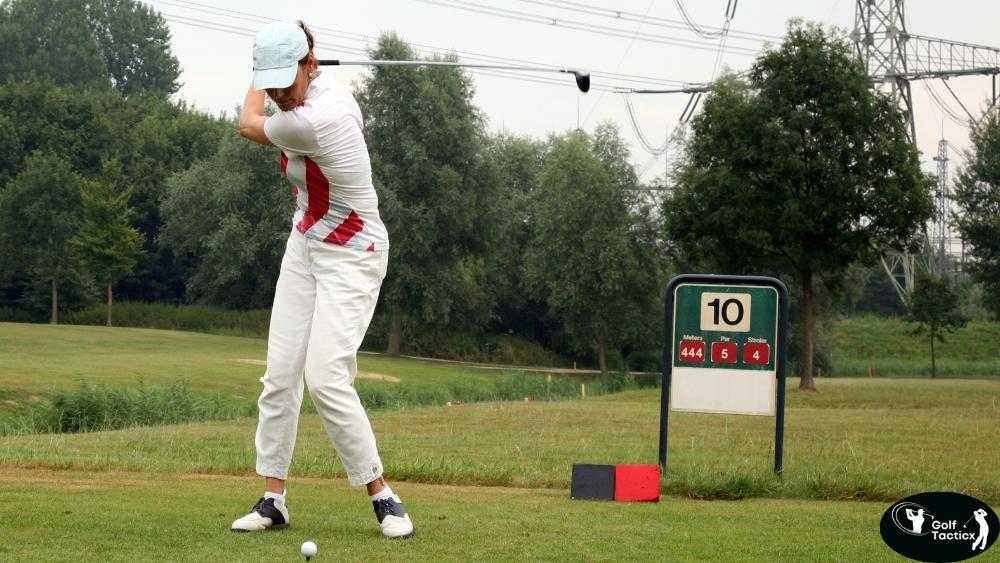In our previous posts, we’ve explored optimizing swing efficiency, understanding biomechanical movements, fine-tuning your impact position, and how to Control Clubface to shape shots precisely. Now, let’s focus on improving lag and shaft lean, two essential elements that can significantly boost your swing power and consistency.
When you improve lag and shaft lean, you’re able to store and release energy more effectively through impact, leading to better ball compression and increased distance. These mechanics help create a more forward shaft angle at contact, which encourages crisp, penetrating shots. Golfers who master these techniques often notice a tighter shot dispersion and better control of trajectory.
Whether you’re a beginner or an experienced player, learning how to improve lag and shaft lean can lead to meaningful changes in your performance. In this guide, we’ll break down easy drills, practical tips, and common mistakes to avoid so you can start seeing results in your very next round.
Understanding Lag and Shaft Lean
Lag: Lag refers to the angle between your lead arm and the club shaft during the downswing. Maintaining this angle until just before impact allows the clubhead to “lag” behind your hands, storing energy that is released at the moment of contact, resulting in increased clubhead speed and distance.
Shaft Lean: Shaft lean is the forward tilt of the club shaft at impact, with the hands ahead of the ball. This position delofts the clubface, promoting a lower, more penetrating ball flight and better control.
The Importance of Lag and Shaft Lean
Incorporating lag and shaft lean into your swing offers several benefits:
Increased Distance: By maintaining lag, you release energy efficiently at impact, leading to higher ball speeds and greater distance.
Improved Accuracy: Proper shaft lean ensures solid contact and a more consistent ball flight, enhancing your accuracy.
Enhanced Control: A forward shaft lean at impact allows for better trajectory control, enabling you to navigate various course conditions effectively.
In golf, mastering lag and shaft lean also leads to better compression of the ball, an essential factor for producing that powerful, tour-level sound and feel at impact. It promotes a downward strike with your irons, which is key for generating spin and controlling your approach shots.
With wedges, this technique allows you to flight the ball lower with more spin, giving you added control on scoring shots. As your ability to improve lag and shaft lean develops, your overall ball-striking becomes more reliable, translating to lower scores and more confidence on the course.
Practical Drills to Improve Lag and Shaft Lean
Incorporating specific drills into your practice routine can help you develop better lag and shaft lean:
Drag to Lag Drill:
Purpose: To develop the feeling of maintaining lag during the downswing.
Execution:
- From your address position, drag the clubhead away from the ball, leading with your hands.
- As you transition to the downswing, allow your wrists to re-cock, increasing the angle between your lead arm and the club shaft.
- Continue through to impact, ensuring your hands are ahead of the ball, promoting shaft lean.
Tip: Focus on maintaining a relaxed grip to facilitate the lagging motion.
Impact Bag Drill:
Purpose: To practice achieving proper shaft lean at impact.
Execution:
- Place an impact bag or a similar soft object in front of your ball position.
- Take your normal swing, aiming to strike the bag with your hands ahead of the clubhead, simulating shaft lean.
- This drill provides immediate feedback on your impact position and helps reinforce the correct shaft lean.
Tip: Ensure your hands lead the clubhead through impact to promote proper shaft lean.
One-Handed Swings:
Purpose: To develop wrist hinge and lag.
Execution:
- With your lead hand (left hand for right-handed golfers), make half swings focusing on hinging your wrist properly.
- Feel the clubhead lagging behind your hands during the downswing.
- Repeat with your trail hand to develop symmetry.
Tip: Keep your grip relaxed to allow for natural wrist hinge and lag.
Wrist Hinge Drill:
Purpose: To enhance wrist hinge and maintain lag.
Execution:
- Take your normal stance and swing the club back, focusing on hinging your wrists so that the club shaft is parallel to the ground at the top of your swing.
- Maintain this wrist hinge as you transition to the downswing, leading with your hands and keeping the clubhead lagging behind.
- Release the clubhead just before impact, ensuring your hands are ahead of the ball.
Tip: Practice this drill slowly to develop the correct feel for wrist hinge and lag.
Common Mistakes to Avoid
Be mindful of these common errors that can hinder your ability to develop lag and shaft lean:
Early Release: Unhinging the wrists too early in the downswing can lead to a loss of lag and shaft lean, resulting in weak shots.
Tension in Hands and Arms: Excessive tension can restrict wrist hinge and lag, leading to inconsistent ball striking.
Incorrect Grip Pressure: Holding the club too tightly can prevent proper wrist hinge and lag.
Lack of Lower Body Engagement: Failing to initiate the downswing with the lower body can prevent the proper sequencing needed for lag and shaft lean.
How Lag Impacts Different Clubs
To fully improve lag and shaft lean, it’s essential to understand how these mechanics apply differently across your golf bag. For instance, with short irons and wedges, a forward shaft lean enhances your ability to strike down on the ball, generating more spin and control, ideal for precision on approach shots.
With your driver, however, too much shaft lean can lead to lower launch and lost distance. Instead, maintaining lag in the early downswing and releasing it smoothly through impact is key for maximizing driver performance. By learning how to adjust your technique based on the club you’re using, you can improve lag and shaft lean in a way that elevates every shot, from tee box to green.
Signs You’re Improving Lag and Shaft Lean
- Ball launches lower and feels compressed
- Divots appear in front of the ball
- Irons travel farther with less effort
- Contact feels crisp and consistent
- You maintain wrist angles through downswing
- Hands lead the clubhead at impact
- Swing feels smoother, yet more powerful
Use this checklist to confirm whether your practice is starting to improve lag and shaft lean. Even one or two of these signs can indicate that you’re on the right path.
Before vs. After Improving Lag and Shaft Lean
| Swing Element | Before Improvement | After Improvement |
|---|---|---|
| Ball Contact | Inconsistent, often thin or fat | Clean strikes with solid compression |
| Distance (7-Iron Example) | Around 130 yards | 145–150 yards consistently |
| Ball Flight | High, floaty, lacks control | Penetrating and accurate trajectory |
| Spin Control | Random spin rates | Predictable, consistent spin |
| Swing Confidence | Tentative swings | Strong, committed motion |
This table highlights the transformation that happens when you improve lag and shaft lean. The gains in distance, consistency, and control can be game-changing, especially under pressure.
Incorporating Lag and Shaft Lean into Your Routine
To effectively integrate lag and shaft lean into your swing, consider the following steps:
Warm-Up Properly: Use training aids like the SKLZ Gold Flex Trainer to prepare your muscles and enhance flexibility.
Focus on Technique: During practice, concentrate on maintaining lag and achieving proper shaft lean at impact.
Seek Professional Guidance: Consider taking lessons from a golf instructor to receive personalized feedback and adjustments.
Monitor Progress: Regularly assess your performance to identify areas for improvement and celebrate successes.
Conclusion
Mastering lag and shaft lean is a journey that requires dedication and consistent practice. By understanding these concepts and incorporating targeted drills and training aids into your routine, you can enhance your swing efficiency, leading to more powerful and accurate shots.
Small adjustments over time can lead to major breakthroughs, especially when paired with a solid understanding of body mechanics. Also, don’t forget to assess how your grip, stance, and tempo affect your ability to improve lag and shaft lean. These subtle details often make a big difference.
In our next post, we’ll explore how to control golf ball trajectory at impact to shape shots precisely. Stay tuned as we continue to delve into the intricacies of the golf swing to help you improve lag and shaft lean and elevate your game.
















Leave a Reply